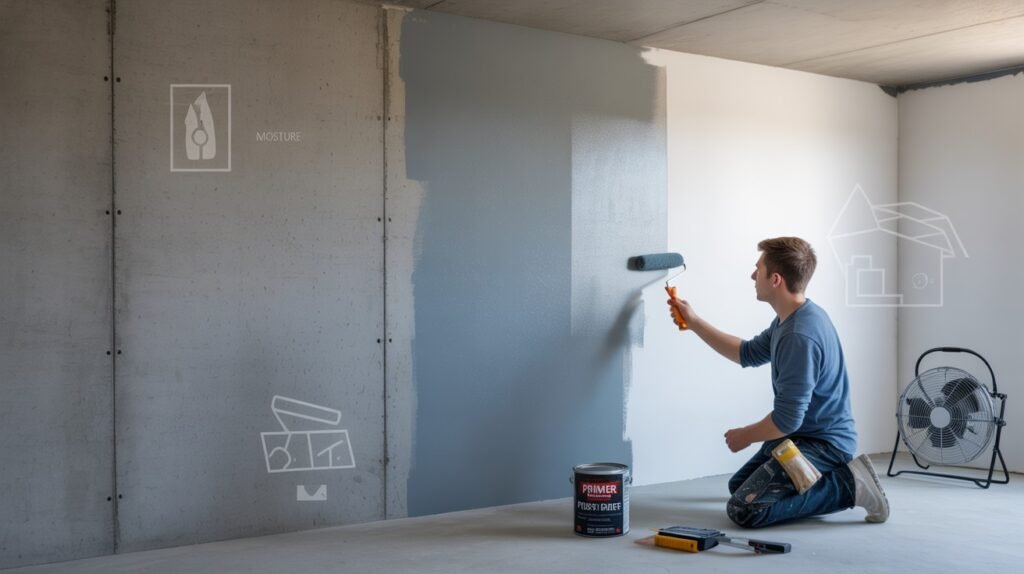Got a basement that feels more like a cave than a comfortable living space?
You’re not alone. Many homeowners struggle with making their lower levels feel bright and inviting, but the solution might be simpler than you think.
Most people approach painting basement walls the same way they’d paint any other room in their house. Big mistake.
Basements present unique challenges that require specific strategies to achieve lasting, beautiful results.
Without proper preparation and technique, you’ll likely face peeling paint, mold growth, and wasted time and money on do-overs.
Today, we’re sharing five game-changing tips that will help you master painting basement walls like a pro, creating a space you’ll want to spend time in.
These proven strategies will save you from costly mistakes and deliver results that last for years.
Why Painting Basement Walls Requires Special Consideration?
Challenges of Basement Environments
Basements face constant moisture issues that make standard painting approaches ineffective.
High humidity levels, limited air circulation, and groundwater seepage create conditions where regular paint fails quickly.
Temperature fluctuations cause condensation buildup on walls, while poor lighting makes it difficult to spot problem areas during application.
These environmental factors demand specialized products and techniques to achieve durable, attractive results that won’t deteriorate within months.
Differences Between Above-Ground and Below-Ground Wall Conditions
|
Factor |
Above-Ground Walls |
Below-Ground Walls |
|
Moisture Exposure |
Minimal, controlled indoor humidity |
Constant moisture from soil contact |
|
Temperature Stability |
Consistent with HVAC systems |
Fluctuates with ground temperature |
|
Air Circulation |
Good airflow from windows/vents |
Limited ventilation, stagnant air |
|
Natural Light |
Abundant sunlight for drying |
Little to no natural light |
|
Foundation Material |
Drywall or plaster typically |
Concrete, masonry, or foundation walls |
|
Waterproofing Needs |
Not required |
Essential for moisture control |
Common Mistakes People Make When Painting Basement Walls
- Using Regular Interior Paint Instead of Moisture-Resistant Options Standard latex or oil paints aren’t formulated for high-moisture environments and will peel or bubble quickly when applied to basement surfaces.
- Skipping the Primer Step to Save Time and Money Primer creates the essential barrier between the wall surface and topcoat, preventing moisture penetration and ensuring proper paint adhesion.
- Painting Over Existing Mold or Mildew Without Proper Treatment Simply covering fungal growth with paint allows it to continue spreading underneath, eventually breaking through the new finish.
- Applying Paint in Humid Conditions Without Adequate Ventilation Poor timing and insufficient airflow prevent proper curing, leading to uneven coverage and extended drying times that invite problems.
- Ignoring Cracks and Surface Imperfections Before Application Failing to repair damaged areas allows moisture to penetrate behind the paint film, causing premature failure and creating bigger repair issues later.
Choosing the Right Paint for Your Basement Walls
Selecting appropriate paint is crucial for basement success.
- Masonry paint works best on concrete walls, offering superior adhesion and durability.
- Waterproofing paints provide moisture barriers but may require multiple coats.
- Epoxy paints deliver exceptional protection against humidity and wear.
- Mold-resistant formulas contain antimicrobial additives that prevent fungal growth.
|
Feature |
Oil-Based Paints |
Latex Paints |
|
Moisture Resistance |
Excellent barrier properties |
Good with a proper primer |
|
Drying Time |
6-8 hours between coats |
2-4 hours between coats |
|
Cleanup |
Requires solvents |
Water cleanup |
|
Durability |
Superior long-term performance |
Adequate for most applications |
Choose latex for easier application and cleanup, and oil-based for maximum moisture protection.
5 Essential Tips for Painting Basement Walls
1. Always Check for Moisture Before Painting
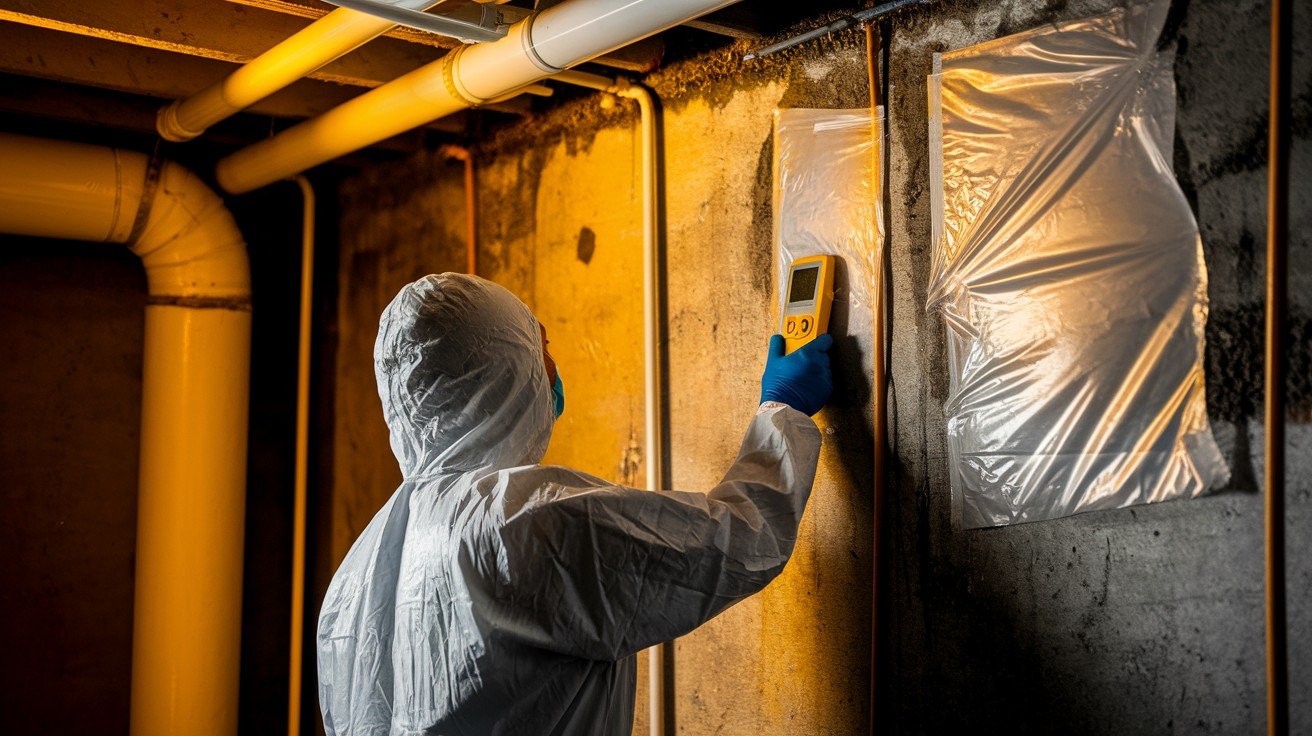
Test walls for dampness using a moisture meter or a plastic sheet test. Tape plastic squares to different wall sections for 24-48 hours.
If condensation appears underneath, moisture problems exist. Address leaks, improve drainage, or install waterproofing before painting.
Painting over wet surfaces guarantees failure within months. Wait for completely dry conditions and fix underlying water issues first for lasting results.
2. Use a Mold-Resistant Primer
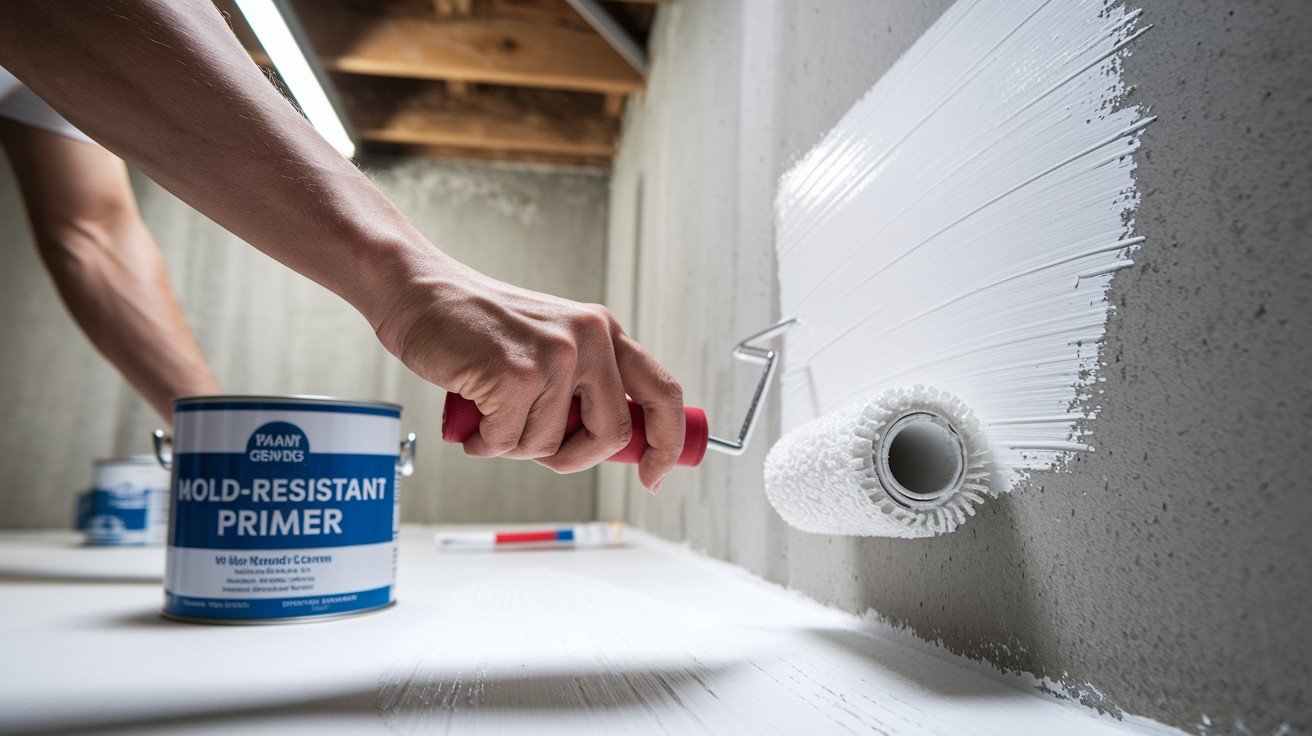
Apply high-quality mold-resistant primer to all surfaces before topcoat application. These primers contain antimicrobial properties that prevent fungal growth while creating proper adhesion for finish paint.
Standard primers lack the moisture barriers needed in basement conditions. Choose alkyd-based primers for concrete walls or specialty moisture-blocking primers for maximum protection.
This step prevents peeling, bubbling, and mold growth later.
3. Go with Light Colors to Brighten the Space
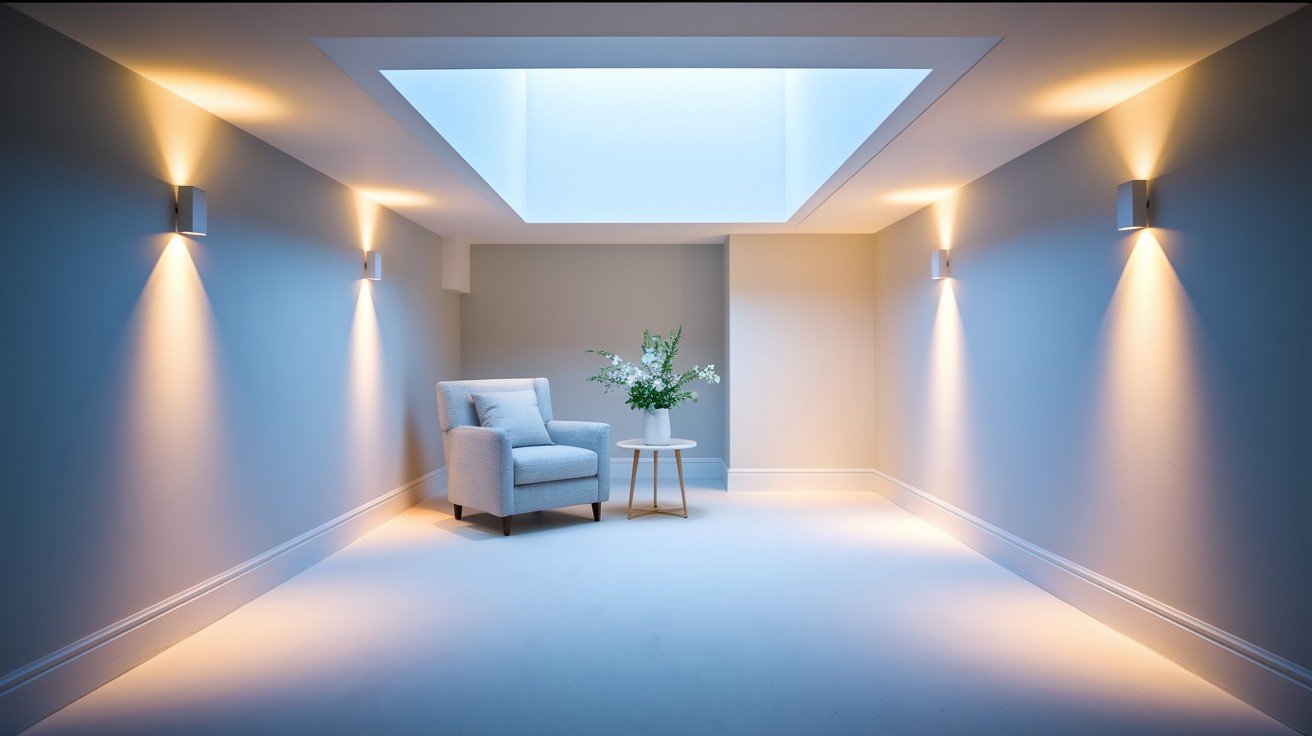
Light colors reflect available light, making basements feel larger and more inviting. White, cream, light gray, and pale blues work best in low-light environments.
Dark colors absorb light and create cave-like atmospheres in already dim spaces.
Light shades also make it easier to spot moisture problems, cracks, or mold growth during regular maintenance. Consider semi-gloss finishes for additional light reflection.
4. Apply Multiple Thin Coats for Better Coverage
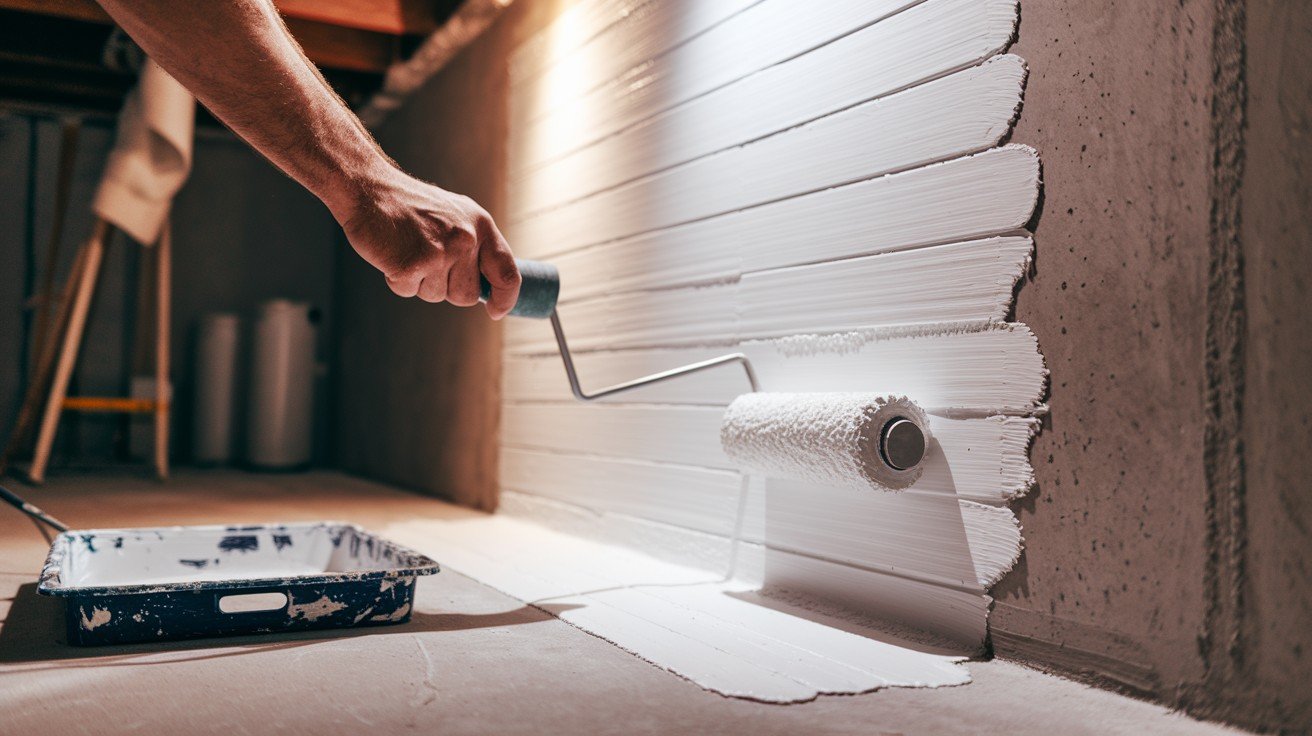
Thin coats dry faster and adhere better than single thick applications. Apply 2-3 light coats rather than one heavy coat to prevent drips, sags, and uneven coverage.
Allow proper drying time between coats as specified by the manufacturer instructions.
This technique provides better moisture protection, smoother finish, and longer-lasting results. Rush jobs with thick coats typically fail within the first year.
5. Ensure Proper Ventilation During and After Painting
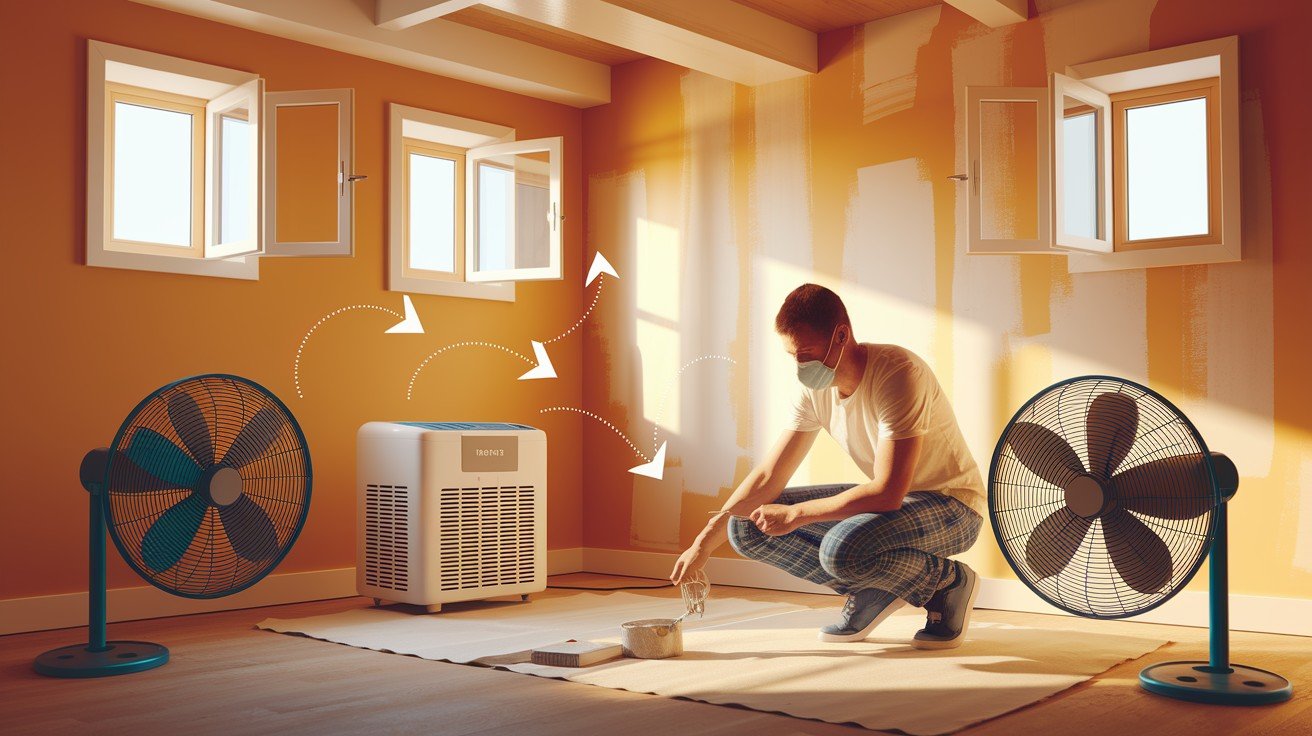
Run fans, dehumidifiers, and open windows when possible during painting projects. Good air circulation speeds drying, prevents humidity buildup, and reduces fumes.
Continue ventilation for 48-72 hours after completion to ensure complete curing. Poor ventilation traps moisture, extends drying times, and creates conditions for mold growth.
Consider renting industrial fans for large basement projects to maintain optimal air movement.
Real Homeowners Speak: Community Tips & Mistakes to Avoid
Reddit Success Stories
Homeowners on r/HomeImprovement consistently recommend Drylok waterproofing paint for concrete walls, with many reporting 5+ years without peeling.
One user shared how switching from regular primer to Kilz mold-blocking primer solved recurring black spots after three failed attempts.
Common Pitfalls & Solutions
Multiple forum users learned the hard way that painting during rainy seasons causes extended drying times and poor adhesion.
The solution? Wait for dry weather and run dehumidifiers for 48 hours before starting.
Another frequent mistake involves using flat paint instead of satin or semi-gloss finishes, making cleaning impossible.
Popular Tips
Experienced DIYers swear by the “plastic bag test” for moisture detection and recommend Benjamin Moore’s Aura paint for challenging basement conditions, despite higher costs.
What the Experts Say: Professional Advice for DIYers?
Professional Insights
Contractor Mike Rodriguez, with 15 years of experience states, “The biggest mistake I see is homeowners rushing the prep work.
Spend 70% of your time on preparation and 30% on actual painting.” Painter Sarah Chen adds, “Temperature matters more than people realize; never paint when it’s below 50°F or above 85°F in basements.”
Expert Tool Recommendations
Professionals favor synthetic brushes for water-based paints and natural bristles for oil-based products.
High-quality rollers with 3/8-inch nap work best on textured concrete. Invest in proper drop cloths and quality brushes – they make noticeable differences in final results.
Call a Pro When
Extensive water damage, structural cracks wider than 1/4 inch, or mold covering more than 10 square feet require professional assessment before painting begins.
Conclusion
Upgrading your basement with paint doesn’t have to be a frustrating experience filled with peeling walls and wasted money.
By following these five essential tips; checking for moisture, using mold-resistant primer, choosing light colors, applying multiple thin coats, and ensuring proper ventilation; you’ll achieve professional-quality results that last for years.
Remember, preparation is everything when it comes to basement painting.
Take time to address moisture issues, select appropriate products for your specific conditions, and don’t rush the process.
The extra effort upfront will save you countless hours and dollars in repairs down the road.
Your basement has the potential to become a comfortable, inviting space that adds real value to your home.
With the right approach and quality materials, you can create a lower level that your family will want to use and enjoy.
Frequently Asked Questions
How long should I wait before applying a second coat of paint?
Wait 4-6 hours for latex paint, 8-12 hours for oil-based paint in basement conditions.
Can I paint directly over existing basement paint without primer?
Never skip primer on basement walls – it’s essential for moisture protection and proper adhesion.
What’s the best time of year to paint basement walls?
Late spring through early fall, when humidity is lowest and ventilation options are best.

